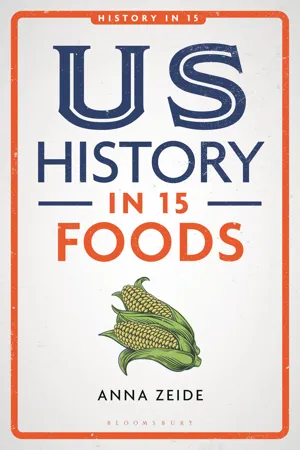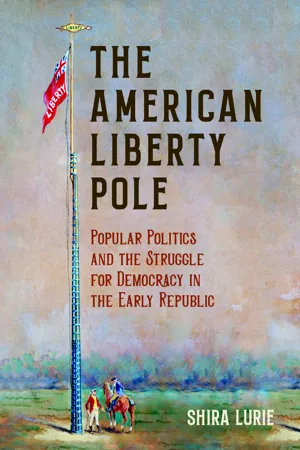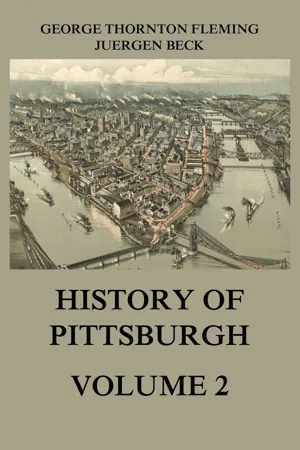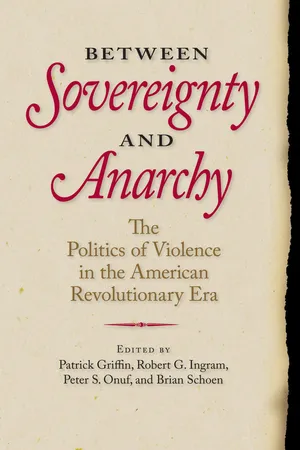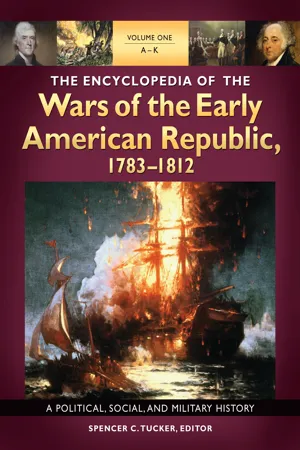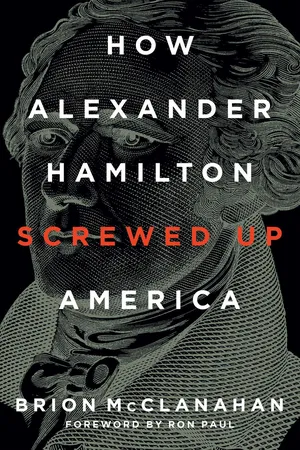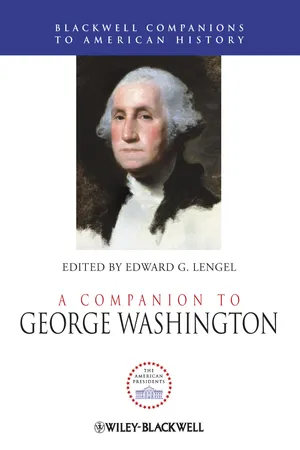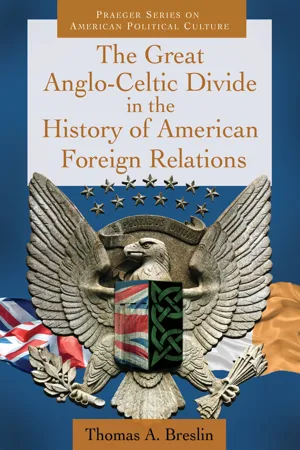History
Whiskey Rebellion
The Whiskey Rebellion was a 1794 uprising in western Pennsylvania in response to a federal excise tax on whiskey. The rebellion was fueled by the resentment of small farmers and distillers towards the tax, which they saw as unfair and burdensome. President George Washington's response, including the mobilization of a federal militia, demonstrated the new government's ability to enforce federal laws and maintain order.
Written by Perlego with AI-assistance
Related key terms
Related key terms
1 of 4
Related key terms
1 of 3
10 Key excerpts on "Whiskey Rebellion"
- eBook - ePub
- Anna Zeide(Author)
- 2023(Publication Date)
- Bloomsbury Academic(Publisher)
This conception of whiskey, along with its critical role in the frontier economy, explains why the conflicts over the whiskey taxes and resulting Whiskey Rebellion became so heated. At the heart of the conflict were also broader disagreements between Jefferson and his rival Alexander Hamilton, which laid the foundation for the first political parties in the new United States. Jefferson and his followers favored farmers and ordinary people, a weak federal government, state banks, and free trade. Hamilton and his Federalist party, in contrast, championed an elite manufacturing society, a strong central government, a national bank, and protective tariffs. Thus, when Hamilton led Congress in passing “an excise on distilled spirits” in 1791 in order to raise revenue to pay down the national debt, he was not only taxing whiskey but also enacting his political views in leveraging the power of the federal government to bring the backcountry frontiersmen who produced whiskey in line with a modern manufacturing economy. But the westerners targeted by this tax fought back—again, not only to protect their whiskey, but to protect their own political views and ways of life. This event and the frontier in which it took place were key to early American politics.The “Whiskey Rebellion” and Its AftermathIn calling this episode in US history the “Whiskey Rebellion,” scholars have followed the lead of Alexander Hamilton himself who was understandably antagonistic toward the rebels. Historian Terry Bouton argues that this term diminishes the frontiersmen’s position, making us think of them as “drunken, gun-wielding hillbillies, frightening but too comical to be taken seriously.” Instead, he argues that it should more appropriately be called the “Pennsylvania Regulations,” to place the events into the context of other “regulations,” or prior efforts in the backcountry to regulate the government and influence political leaders.21 Contemporaries who supported the insurrectionists put forward similar claims, as with Henry Brackenridge, whose 1794 book is titled History of the Western Insurrection, with only a reference to the common (but less accurate) name of the “Whiskey Insurrection” in the subtitle (Figure 3 ). And indeed, the actions of western Pennsylvanians had precedents in earlier agrarian protests and in efforts to combat taxes that Americans saw as unjust. In fact, the entire American Revolution might be seen as one such precedent. In the hit Broadway musical Hamilton, Thomas Jefferson’s character makes this connection when he raps, “Look, when Britain taxed our tea, we got frisky. Imagine what gon’ happen when you try to tax our whisky.”22 In this way, the “Whiskey Rebellion” was akin to the Boston Tea Party itself, only with Hamilton on the other side. Hamilton and the Federalists, for their part, denied this comparison, arguing that, in this case, the taxation followed fair elected representation in Congress—taxation with - eBook - ePub
The Revolutionary Age
Popular Politics and the Struggle for Democracy in the Early Republic
- Shira Lurie(Author)
- 2023(Publication Date)
- University of Virginia Press(Publisher)
6The Whiskey Rebellion brought widespread attention to the questions about popular political participation in a representative government first raised during the 1770s and 1780s. As Americans fought over these issues, they advanced differing interpretations of the citizen’s role in republican politics. The Whiskey Rebellion was about much more than taxes or regional alienation. To all involved, it offered a critical test of what it meant to be a citizen of the United States.Northumberland County constable William Bonham led the raising of the local liberty pole in September 1794. Bonham’s grievances echoed those held throughout central and western Pennsylvania: the excise disproportionately burdened poor farmers. These men traveled difficult miles over bad roads to carry their produce to eastern markets. To ease their journey and maximize profits, they reduced their bulky grains to higher value and more potable whiskey. A targeted tax on whiskey, argued Bonham, was “oppressive on the poor people” whose location and livelihood required distilling. Moreover, rather than taxing the sale of whiskey, the excise applied to production, meaning that a distiller had to absorb the cost up front with no guarantee of a return. If he produced more whiskey than he could sell, he could not recoup the already paid tax. The law also stipulated that violators had to appear before a federal court in Philadelphia, some three hundred miles away.7Bonham and his neighbors instead favored a land tax as a more just revenue raiser. Unlike the excise, a land tax could address the urgent issue of land scarcity in the west by encouraging speculators to sell some of their large holdings. The past ten years had brought increasing class stratification to Pennsylvania. By 1794, 60 percent of the taxable population in the west owned no land. To Bonham, the whiskey excise proved that “the officers of Government and the Land Jobbers were engrossing all the property of the country.” They meant to enrich themselves by impoverishing ordinary people. Instead, “The Land Jobbers should pay the taxes.”8 - eBook - ePub
- George Thornton Fleming, Juergen Beck(Authors)
- 2018(Publication Date)
- Jazzybee Verlag(Publisher)
CHAPTER I. THE WHISKEY INSURRECTION.The Whiskey Insurrection of 1794 was a dramatic development of the first five years of the young American Republic as well as a drastic test of its inherent strength. This revolution, although throttled by the stern, quick action of President Washington in its incipiency, was saturated with the elements of a popular dissatisfaction that, would its area have been extended ere governmental action supervened, have assailed the very essence of the republic, possibly successfully. The sentience of Hamilton and his great statesmanship instantly interpreted the meaning and included the object of this uprising in its every intention which he was quick to make the President grasp and almost as suddenly to act. Washington's comprehension of the situation brought him as far as Bedford, Pennsylvania, with the troops drafted to suppress the insurrection, his early idea being that it would require the full exercise of presidential power to quell the disorder, but, after consultation with Hamilton, who did accompany the expedition, he returned to Philadelphia.The Whiskey Insurrection was, as a matter of fact, a most impressive affair, and an imposing demonstration based, as it was, upon a principle that had much to do with the voluntary and involuntary exile of very many of the very best of the Irish, Scottish, and Scotch-Irish residents and citizens of the new United States. It is also an historic fact that hundreds were still annually arriving from these disaffected sections of Great Britain similarly motivated. Rather more than a decade of residence of many of these excellent people in the "Western Counties"under circumstances of deprivation akin to destitution, had given to them indurated ideas concerning the theories of taxation very much at variance with the Hamiltonian holdings. This hatred had been both hereditary and acquired. Not a few of them had been overfed upon the idea in both Scotland and Ireland in their youth and manhood and had the testimony of two or three generations of their forebears as to its effect upon those who tried to extort a living from the soil. These people, scattered along the years, both before and after the Revolution, as well as the goodly numbers which had come in recently, following the example of the pioneers, had been hewers of wood and drawers of water for those who possessed the very elementary necessaries, such as salt, plowshares, knives and forks, crockery, in fine, the simplest of farm and domestic requisites, most of these in the stores at Philadelphia and Baltimore, that these frontiersmen and their dependents needed. Depreciated currency of the Revolution and the new republic found no favor in the sight of the merchants of the day either on this or the other side of the Alleghenies. Wheat was literally a "drug on the market,'" all people raising it, nearly all of them much in excess of domestic necessity, while rye and other grains were practically negligible as assets. - eBook - ePub
Commons Democracy
Reading the Politics of Participation in the Early United States
- Dana D. Nelson(Author)
- 2015(Publication Date)
- Fordham University Press(Publisher)
federal imposition, buoyed by recent state success, was especially robust.Westerners fought this tax because of the particular hardship it imposed on the poorest inhabitants, who didn’t have a profitable way to transport wheat (a product not excised) beyond their own region except by converting it to whiskey. Literally, as the inhabitants west of the Alleghenies understood, this tax—the first federal excise—was one that directly and disproportionately favored easterners over westerners, and the wealthy over the poor. Hamilton’s legislation package for funding the state war bonds as a national debt may have been too complicated for most in Congress to follow when they passed it in 1791, but its aims did not escape those whom the tax most burdened.Whiskey had become not just a product, but also a fundamental means of finance in the West: where wheat was used by tenants to pay their rent and labor was paid in wheat, where transportation across the mountains to market was prohibitively expensive, distilling wheat to whiskey (often in communal stills) was the only way to convert it to profit. As historian William Hogeland summarizes, a “liquid commodity both literally and figuratively, the drink democratized local economies, offering even tenants and sharecropping laborers a benefit . . . The product connected popular finance theories with small-scale commercial development that, though marginal, had potential to free rural people of debt and dependency” (Whiskey Rebellion , 67). Westerners knew that large producers could afford the excise, which had to be paid before the sale of the whiskey (which couldn’t legally be sold without federal stamps on casks). The majority of producers, however, were smallholders who lived on slim profit margins and who usually didn’t have cash until they sold their whiskey. And these small operators knew that even if they could pay the excise in advance of sale, marking up the price of their whiskey to recuperate the difference, large distillers would simply cut their prices and undercut small operator sales. The enforcement of the excise would thus force tenuously solvent smallholders to give up this key source of revenue, without which they would have to sell out to the large landholders. As Hogeland summarizes it elsewhere, “Hamilton wrote the tax law to amplify the advantages of big, industrial distillers throughout the country; to put seasonal distillers out of business; and to defeat the democratic effects of whiskey economics in the west” (Founding Finance - eBook - ePub
Jeffersonian America
The Politics of Violence in the American Revolutionary Era
- Patrick Griffin, Robert G. Ingram, Peter S. Onuf, Brian Schoen, Patrick Griffin, Robert G. Ingram, Peter S. Onuf, Brian Schoen(Authors)
- 2015(Publication Date)
- University of Virginia Press(Publisher)
18In many ways, it was the responses to the Whiskey Rebellion that were more novel than the uprising itself, beginning with the Washington administration’s surprising turn to overwhelming force against what were essentially traditional resistance tactics. The “Watermelon Army” sent into western Pennsylvania to put down the largely dispersed Whiskey rebels numbered some twelve thousand men, a far larger force than previous military responses to far more serious domestic insurrections. The British Empire itself had managed no force so imposing before or during the Revolutionary War. Shays’ Rebellion in 1786 had threatened a federal arsenal but attracted only a fraction of the response. The Shaysites had even gotten some of their demands met, to boot.19In the 1790s, Federalist visions of violence provided sanction for greatly heightened applications of real, disproportionate force. The only gun battles of the Whiskey Rebellion proper occurred when hated federal revenue collector John Neville fired into the angry crowd besieging his “Bower Hill” plantation and killed a man, and then again after Neville brought in troops from Fort Pitt to protect his house. In both cases, the only dead were among the protesters. The Watermelon Army never found anyone to fight, and none of the captured rebels were executed in the end, but bloodthirstiness was the order of the day for many Federalists who got even a slight taste of their visions becoming reality. The reaction of Pittsburgh area Federalists to the deaths at Neville’s house was to “lament that so few of the insurgents fell.” Pittsburgh landowner and commercial distiller Isaac Craig was certain that “such disorders can only be cured by copious bleedings.”20 - eBook - ePub
The Encyclopedia of the Wars of the Early American Republic, 1783–1812
A Political, Social, and Military History [3 volumes]
- Spencer C. Tucker(Author)
- 2014(Publication Date)
- ABC-CLIO(Publisher)
On December 12, 1787, Pennsylvania became the second state to ratify the Constitution of 1787. Pennsylvania developed a new state constitution in 1790, much of which was drawn from the national constitution. Most of the state’s population lived in a somewhat narrow corridor in the state’s eastern and east-central sectors. The population density farther west was quite low. In the central and western portions of the state, small-scale farming predominated. While there were some slaves in Pennsylvania, they were relatively few in number, as the state’s topography and climate did not lend itself to the slave-based agriculture that had taken root in the southern states. In the eastern part of the state, particularly around Philadelphia, industry and commerce predominated. Philadelphia was the site of major shipbuilding facilities. The Philadelphia Navy Yard was the nation’s first naval shipyard. Its origins date back to 1776, when the Continental Congress leased land along the Front Street docks to support the Continental Navy. The site became an official part of the U.S. Navy in 1801 but was moved to a different location during the American Civil War (1861–1865).The city was also home to several important educational institutions. In 1792 the state legislature enacted legislation that facilitated the sale and distribution of land in the western parts of the state. The scheme ultimately brought more harm than good, at least in the short term, as rampant land speculation in the region resulted in unstable land prices and eventual foreclosures.Pennsylvania was the site of two major insurrections during the period—the Whiskey Rebellion of 1794 and Fries’ Rebellion of 1799–1800. Both movements were precipitated by federally imposed taxes that angered local residents, most of whom were small farmers, artisans, and merchants. The Whiskey Rebellion occurred in Pennsylvania’s rural western region and showcased the social and economic disconnect between those individuals living along the frontier and the more wealthy merchants and farmers residing in the eastern region. Both rebellions were quelled relatively quickly, and the federal government used the incidents to demonstrate its new power under the Constitution of 1787 to assert its authority by suppressing domestic insurrections.Not surprisingly, Pennsylvania politics were increasingly polarized during the years of the early republic. Federalists were strongest in the highly commercialized eastern region, while Democratic-Republicans fared well in the largely agrarian central and western portions of the state. By 1805, however, the state’s Democratic-Republican Party itself was badly divided. In 1805 a split in the party prompted Simon Snyder to run for governor against Thomas McKean, who promptly formed an alliance with the Federalists and defeated him. In 1808 Snyder ran again and won. But Snyder initially proved to be no friend of the new James Madison administration and held Secretary of the Treasury Albert Gallatin and his policies in considerable contempt. Not until early 1812, with war clouds on the horizon, did Snyder become a supporter of Madison and his policies. Pennsylvania produced the largest vote in favor of war of any U.S. congressional delegation, with 14 of its 16 members voting for war against Great Britain in June 1812. Anti-Madison forces tried to give Pennsylvania’s electoral votes to DeWitt Clinton in the 1812 presidential election, but mainstream Democratic-Republicans stymied the effort. - eBook - ePub
Failures of the Presidents
From the Whiskey Rebellion and War of 1812 to the Bay of Pigs and War in Iraq
- Thomas J. Craughwell, M. William Phelps(Authors)
- 2008(Publication Date)
- Fair Winds Press(Publisher)
Treasury Secretary Hamilton, ever watchful for an opportunity to exert the authority of the federal government, declared that in such a crisis “an immediate resort to military force” was a necessity, and he recommended that the military target the whiskey rebels in Pennsylvania. Both Hamilton and Washington remembered Shays’ Rebellion in western Massachusetts only a few years before, in 1786 and 1787, an uprising against taxes that had shown the need for a strong central government if the new nation were to enforce its federal laws. Washington conceded that “anarchy and confusion” had the upper hand in western Pennsylvania, but still he held back from calling out the militia to suppress the rebellion. Instead, Washington decided to send three peace commissioners to reason with the rebels in Pennsylvania.Five days after the cabinet meeting, Attorney General William Bradford (no relation to rabble-rouser David Bradford), Pennsylvania Supreme Court Justice Jasper Yeates, and Senator James Ross set out on their mission. They were authorized to grant amnesty to everyone who had interfered with the collection of the whiskey tax and attacked government officials, but Washington instructed them not to promise that the whiskey tax would be repealed. In return for amnesty, Washington demanded that the rebels promise to make no further attempts to obstruct the lawful collection of the whiskey tax, nor to harm or threaten any government officials.Passage contains an image DURING THE AMERICAN REVOLUTION, HENRY “LIGHT HORSE HARRY” LEE PROVED HIMSELF TO BE A BRILLIANT CAVALRYMAN. WASHINGTON PUT HIM IN COMMAND OF THE MILITIA WITH ORDERS TO SUPPRESS THE Whiskey Rebellion.
Passage contains an image
To greet the peace commissioners, a band of rebels raised a liberty pole. In the years before the American Revolution, liberty poles—tall flagstaffs with a liberty cap perched on the top, or flying a flag—had been a favorite emblem of the Sons of Liberty, who erected them in town squares to show their defiance of British authority. The message was perfectly clear to Washington’s delegates: The western Pennsylvania rebels were equating themselves with the Sons of Liberty, and the federal government with the British Crown that had once run roughshod over American liberties. Every day Bradford, Yeates, and Ross encountered angry, violent bands of rebels who cried out for the overthrow of the federal government.Hoping to appease these men, the peace commissioners exceeded their authority. They promised, on the government’s behalf—contrary to President Washington’s instructions—to make “beneficial arrangements” for those who were delinquent in paying their taxes. But nothing could satisfy the rebels. On August 23, Bradford wrote to Hamilton that the rebels were beyond the reach of reason. The commissioners concluded that the president must send a large force of militia to western Pennsylvania “to overawe the disaffected individuals.” Within a day or two of receiving Bradford’s letter, Washington and Hamilton began planning a military expedition to crush the Whiskey Rebellion. - eBook - ePub
- Brion McClanahan(Author)
- 2017(Publication Date)
- Regnery History(Publisher)
CHAPTER FIVE THE REBELLIONW ith the bank and the assumption of state debts fully realized, Hamilton set his sights on securing enough revenue for the general government. This would not be easy. The Constitution authorized the general government, “To lay and collect Taxes, Duties, Imposts and Excises, to pay the Debts and provide for the common Defense and general Welfare of the United States; but all Duties, Imposts and Excises shall be uniform throughout the United States . . .” Hamilton’s financial plan offered both a tariff for raising revenue and an excise tax targeting distilled liquor. The whiskey tax, as it soon was called, would lead to one of the most important events of the Washington administration, the so-called Whiskey Rebellion of 1794. This event was not only a political crisis; the response favored by Hamilton and partly adopted by Washington represented a real shift in constitutional interpretation, one that Hamilton had advanced since 1787.The bill to establish an excise tax was first presented in Congress in May 1790 as a piggyback to the assumption scheme. If the United States government was to be on the hook for millions of dollars in debt, it had to establish a method of raising revenue to retire that debt, and quickly, if possible. No records of the debate over the bill exist, but it fell by five votes. It was reintroduced without the excise clause on June 14, and again failed, this time by an even larger margin. The House cast one final vote on the original bill on June 21. The twelve-vote majority against the bill reflected other underlying political issues, namely the potential relocation of the federal capital. Members of the Pennsylvania and Southern delegations developed a solid front, ostensibly to force the delegations from the New England states to alter their conduct and support relocation. Hamilton’s schemes required a substantial amount of delicacy and manipulation to get them through an increasingly hostile Congress. Still, Hamilton and his congressional allies were confident that the tax would pass in the next session once the dust had settled on assumption and a deal had been struck on the capital. They were right, but it required Hamilton to issue another report and to backtrack on promises he had made in 1787 during the ratification of the Constitution.1 - eBook - ePub
- Edward G. Lengel(Author)
- 2012(Publication Date)
- Wiley-Blackwell(Publisher)
Nearly three months later on 1 January 1795 Washington issued a proclamation in which he urged religious denominations and societies to gather on the 19th of February to give thanks “to the great ruler of Nations” for the suppression of the insurrection and abundant blessings, including a constitutional government that united the people under liberty and order (Washington, 1795). But Washington found a growing level of disorder in the nation’s political affairs. He remained popular as a president, but faced stronger partisan opposition for the rest of his term (Elkins and McKitrick, 1993; Wood, 2009). Part of that response sprung from the massive militia force called to crush the insurrection which prompted fears, particularly among Republicans, that the executive could easily create a standing army to reinforce his authority. Washington’s decision to target the Democratic-Republican societies for their opposition to his administration prompted accusations that he desired to restrict freedom of speech (Ellis and Wildavsky, 1991; Koschnik, 2001; Neem, 2003). The abrupt nature of arrests, interrogations and incarcerations of accused insurgents, as well as the subsequent treason trials in Philadelphia, created a negative image of the administration for many citizens. Although Washington pardoned the two convicted individuals, his action did not completely redeem that image in the eyes of all Americans (Ifft, 172–173, 176; Slaughter, 1986).In spite of the partisan reaction, Washington’s decision to enforce the excise laws through military coercion enabled him to send strong messages to the nation. Washington demonstrated the energy of the federal government and its authority to enforce execution of congressional laws. He made it clear that if any individual or groups desired to change the laws, they must do so in an orderly and constitutional manner. Concerns and issues of national importance took priority over those of any group or state. Washington clearly demonstrated to Americans and the world that a republican form of government did not doom the country to anarchy (Washington, 1794). But most importantly, Washington’s response to the Whiskey Insurrection helped shape the nature of the presidency and redefined the office as a powerful arbitrator of the nation’s affairs for generations to come.LIST OF FURTHER READINGSCooke, J. E., (1963), “The Whiskey Insurrection: A Re-evaluation”, Pennsylvania History , [e-journal] 30: 316–346, Available through JSTOR [Accessed 7/12/2010).Dallek, R. (1996), Hail to the Chief: The Making and Unmaking of American Presidents . Oxford.Ellis, R. and Wildavsky, A. (1991), Dilemmas of Presidential Leadership: From Washington through Lincoln . New Brunswick, NJ.Findley, W. (1796), History of the Insurrection, in the Four Western Counties of Pennsylvania , in the year 1794 [e-book] Philadelphia; Samuel Harrison Smith.Foner, P. S., ed., (1976), The Democratic-Republican societies, 1790–1800: A Documentary Sourcebook of Constitutions, Declarations, Addresses, Resolution, and Toasts - Thomas A. Breslin(Author)
- 2011(Publication Date)
- Praeger(Publisher)
16 Only a few years later their cousins in Ireland would rise up against the English. The more serious Irish Rebellion of 1798 would fail, and for the same reasons. Irish rebels would have America as their refuge, to the chagrin of many Anglo-Americans who were determined that America would not be a refuge for rebels of any kind, especially the Irish.The efforts of the Anglo-American government to bring Appalachian whiskey production under control and tax it were very similar to the efforts of the English government in this period to regulate and tax whiskey production in Ireland. The results were also similar. By acts in 1774 and 1779 the English government had sought to raise government income by outlawing rural stills and refusing licenses to smaller stills. “The net effect was to make illegal one of the most pervasive elements of Catholic districts. Illicit whiskey was everywhere, widely believed by the common people to be something wholesome. . . . As taxes increased into the 1790s . . . [h]earth-money collectors and excise officials were regularly accompanied by military and bloody clashes became a feature in the increasingly tense atmosphere of the 1780s and 1790s, particularly in south Ulster and the north midlands.”17Other events on the frontier as well as at sea further tested the new republic. In addition to fomenting Amerindian attacks on the United States, England also forced, “pressed,” unwilling American seamen into its navy and disrupted American trade with the French West Indies. Not until late 1794, when England was deep into war with France, and the American government had successfully gotten through the Whiskey Rebellion crisis, did the English government relent. Then its leaders plied American diplomat John Jay with wine, food, flattery, and some trade concessions. Jay recognized the ploy and alerted President Washington but he was bargaining from a weak position. He and the ruling Federalist Party made peace and accepted English domination of the seas.
Index pages curate the most relevant extracts from our library of academic textbooks. They’ve been created using an in-house natural language model (NLM), each adding context and meaning to key research topics.
Explore more topic indexes
Explore more topic indexes
1 of 6
Explore more topic indexes
1 of 4
